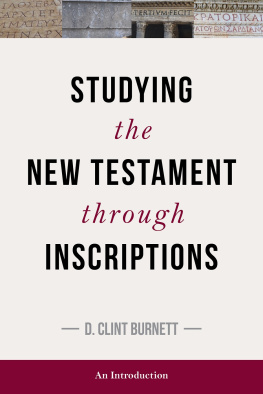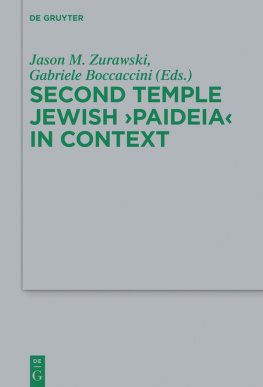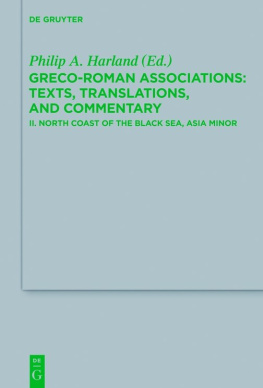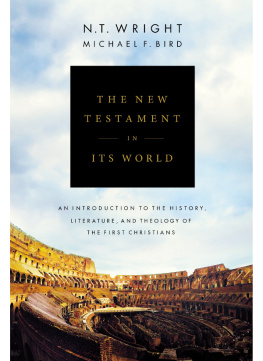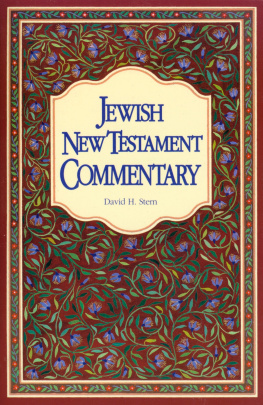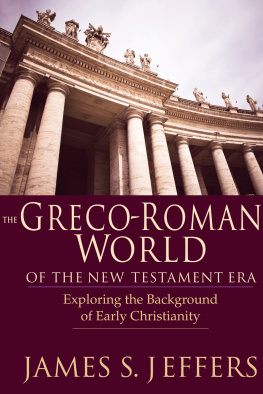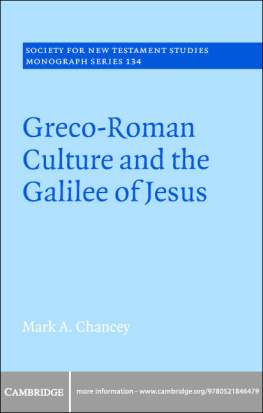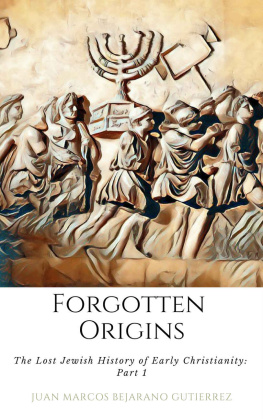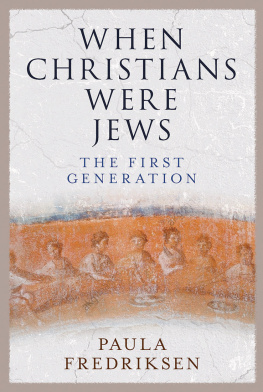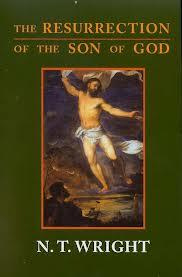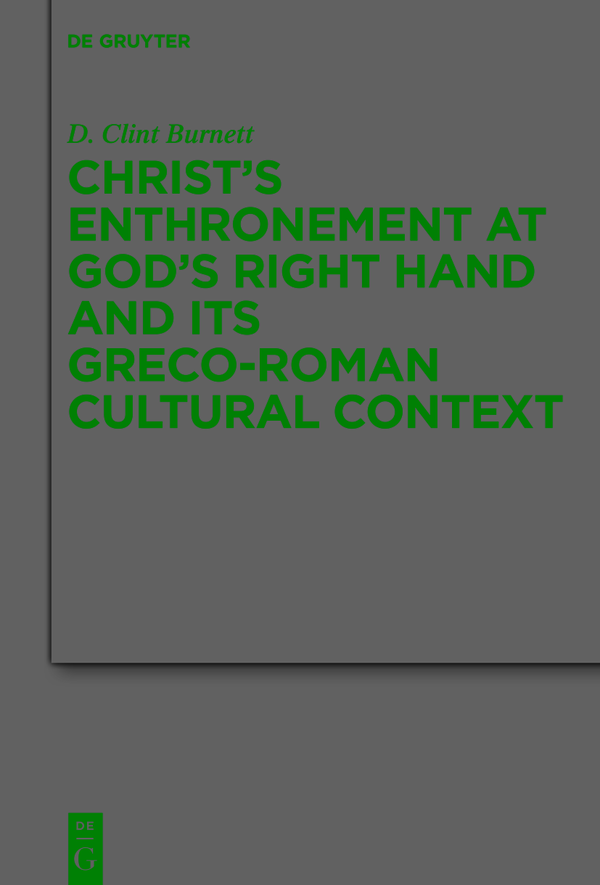Beihefte zur Zeitschrift fr die neutestamentliche Wissenschaft
Edited by
Matthias Konradt
Erich Grer
Richard B. Hays
Judith Lieu
Laura Nasrallah
Jens Schrter
Gregory Sterling
Carl Holladay
Hermann Lichtenberger
James D. G. Dunn
Michael Wolter
Volume
ISBN 9783110691535
e-ISBN (PDF) 9783110691795
e-ISBN (EPUB) 9783110691887
Bibliographic information published by the Deutsche Nationalbibliothek
The Deutsche Nationalbibliothek lists this publication in the Deutsche Nationalbibliografie; detailed bibliographic data are available on the Internet at http://dnb.dnb.de.
2021 Walter de Gruyter GmbH, Berlin/Boston
To my doctoral mother and the type of scholar I aspire to be, Pheme Perkins
[] (Luke 6:40).
Acknowledgements
The roots of this project began with my time as a Graduate Assistant for Prof. Richard E. Oster (Harding School of Theology) (20112012). At that time, he was completing a commentary on Revelation and, as his Graduate Assistant, I conducted research and read and edited his manuscript. During this process, I read the promise of the exalted Jesus to the Laodicean Christ-confessors: The one who conquers I will allow him to sit with me on my throne as I conquered and sat with my Father on his throne (Rev 3:21). The footnote to this verse that Prof. Oster provided was A.D. Nocks seminal article, , which focuses on Roman principes as temple and throne sharers of the gods. During the first year of my Ph.D. program at Boston College (2013), I took a course on Roman religion with Prof. Kendra Eshleman (Boston College) and wrote a term paper on that very topic. Later, I presented that paper in Boston Colleges Biblical Studies doctoral colloquium (2014). After my presentation, Prof. Pheme Perkins (Boston College) told me, This needs to be your dissertation. And, so it was. I am delighted that because of Prof. Perkinss encouragement not only did this project become my doctoral thesis but also, after substantial revision, my first monograph.
I wish to acknowledge and dedicate this monograph to the following giants on whose shoulders I stand. Charles Clark (retired minister) piqued my interest in the study of the Bible as a nineteen-year-old new convert to Christianity. Prof. Kevin Youngblood (Harding University) taught me Greek and Hebrew and was the first person to encourage my pursuit of a doctorate in Biblical Studies. Prof. Oster introduced me to the academic study of Paul the apostle and the larger Greco-Roman world. Prof. James C. Walters (Boston University School of Theology) furthered my study of the Greco-Roman world by introducing me to the archaeology of cities associated with Paul and allowing me to discover some of these cities on the western coast of Turkey in an on-site archaeology and the New Testament course that he conducted. Prof. Laura Nasrallah (Yale Divinity School) honed my archaeological skillset while on faculty at Harvard Divinity School. In the process, she stressed the necessity of contextualized interpretation of material culture and allowed me to join her on-site course on archaeology and the New Testament in Greece and Turkey. Prof. David Vanderhooft (Boston College) demonstrated to me the possibilities and benefits of using material culture in the interpretation of the Bible, the Hebrew Bible in particular. He is the patron of my career as a field archaeologist, a supporter of my work, someone who has believed in me, even on those days when I do not believe in myself, and above all, a wonderful amicus et mentor. Prof. John Darr (Boston College) pushed me to consider the practical, theological implications of this project for first century CE Christ-confessors. Prof. Jeff Cooley (Boston College) showed me the necessity and benefit of knowing the history of scholarship in ones area of research. Prof. Eshleman introduced me to Roman and Greek religion and stressed the need to read every text in its original language. Prof. Yonder Gillihan (Boston College) has underscored the necessity of not going beyond the claims of our ancient sources. Joel B. Kemp (Emory University), C. Thomas Fraatz (St. Lawrence University), Kimberly Bauser McBrien (Trinity University), Daniel Vos (Boston College), Craig A. Ford (St. Norbert College), Jonathan Bailes (Christ Church, Plano, TX), and Christopher Stroup (School of Theology and Ministry at Boston College) were the best fellow Ph.D. students, colleagues, and most importantly friends that anyone in a doctoral program could ask for. From my first day at Boston College and beyond, they have inspired and reassured me, at times consoled me, and cheered my progress to this very day. Prof. Perkins is one of the main reasons I pursued my doctorate from Boston College. Her breadth of knowledge, scholarship, and professionalism are on levels few mortals reach. Her commitment to me throughout my doctoral program and beyond has been unshakable and her influence is on every page of this book. The person to whom I am most indebted, however, is my wife, Gerilyn Burnett. She has been a fount of encouragement to me since the day that we met. She is confident in my own abilities when I am not. Without my beloved Gerilyn, I would not have pursued doctoral studies in Bible and life would not be as fulfilling as it is.
Finally, I wish to show my gratitude to several individuals who helped to move my manuscript to publication. I appreciate my blind reviewers (whoever they are!). Their comments served to improve my argumentation and presentation of the material. In addition, I am grateful to my editors at de Gruyter, Alice Meroz and Dr. Albrecht Dhnert, for accepting my manuscript and guiding it through to publication and especially for Alice who oversaw the entire process even in the midst of and challenges presented by a global catastrophe, the COVID19 pandemic. The last person I need to thank is my good friend, Jeremiah Smith, who demonstrated Christian charity by proofreading the entirety of this manuscript, including its copious footnotes. Any errors found therein, however, are my own fault and not his.
D. Clint Burnett
Knoxville, TN
Lent 2020
List of Tables
1.1 | Parallels between Psalm 2 and 110 in MT 21 |
1.2 | Parallels between Psalm 2 and 109 in OG 22 |
1.3 | Allusions to Ps 110:1 in First Century CE Christian Letters 27 |
5.1 | Unique Vocabulary of Phil 2:611 116 |
5.2 | Conceptual Parallels between Acts 2:3336 and Phil 2:911 119 |
5.3 | Members of the JulioClaudian Imperial Family Honored in Philippi 130 |
5.4 | Cultic Officials for JulioClaudian Imperial Divine Honors in Philippi 131 |
6.1 | Use of the Root and Dative of Place in Sources Attesting to Temple and Throne Sharing 172 |
List of Figures
2.1 | Coin minted in Rome (76 CE) depicting the temple of Jupiter Optimus Maximus and his temple sharers Minerva and Juno ( Yale University Art Gallery: Public Domain) 42 |
3.1 | Coin minted in Teos (27 BCE14 CE) picturing Augustus as a temple sharer of Dionysus (with permission from wildwinds.com) 78 |


